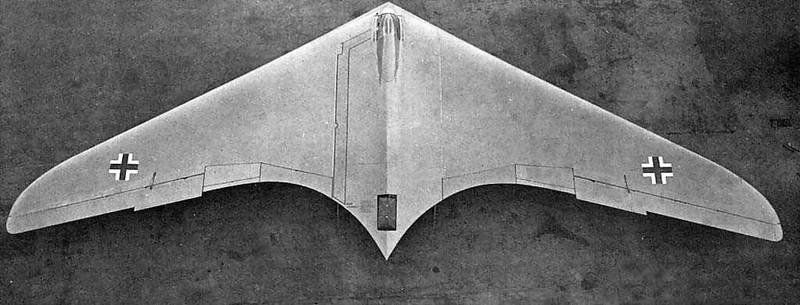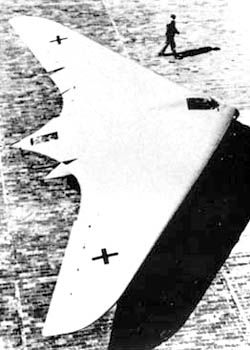
|
|
|
|
|
|
MVP
Join Date: Mar 2009
Casino cash: $2825326
|
Ten Military Aircraft that Never Made it Past the Test Phase
Thought this was pretty cool.
As one would expect, planes have to go through a lot of trial runs before the military is willing to put the money and resources required into their production. So when an airplane disintegrates in midflight or can only be operated successfully by expert pilots with hours of training, that plane joins hundreds of others that were great in theory, but never made it to mass production. Here we present you with ten of the ambitious and flawed aircraft concepts, and why only a few of them ever got made. HK-1 Hercules (The Spruce Goose)  While the original idea for the HK-1 Hercules came from Henry J. Kaiser, a shipbuilder during World War II and the U.S. Army, Howard Hughes was the one who brought the ‘Spruce Goose’ into existence in 1947. The 400,000-pound wooden airplane had a 320-foot wingspan (that’s just 40 feet less than a football field) and was proposed as a way to build a plane that could carry troops and cargo without using precious wartime materials. The plane had a single large hull, produced thrust with eight engines and by the time it was completed in 1947, had cost the U.S. government $22 million and Hughes $18 million. Hughes planned for the plane to carry 750 fully equipped troops or one M4 Sherman tank. The HK-1 was the largest airplane ever built up to that point, in fact, it was three times larger than any plane that came before it. Despite all the money and time that went into its creation, the plane only flew once; it traveled a distance of one mile, at a height of about 33 feet. HZ-1 Aerocycle  The HZ-1 Aerocycle - known as the ‘motorcylce of the air’ was one of several single person flying platforms that the U.S. Army looked into during the 1950s and 60s. The Aerocycle carried a single pilot and its engine on a circular platform, all of which was located just above two 15-foot long rotating propellers. The craft’s pilot would stand toward the rear of the platform, secured by a tether attached to the steering column. Single person flying platforms were going to be used for reconnaissance missions. The belief was that they were easy to pilot so little experience was needed to operate one. They learned otherwise during the testing phase when two pilots crashed because the Aerocycle was ‘too hard to steer without experience’. X-13 Vertijet  Its origins sound more like a bet than a Navy contract; the Ryan Company was tasked with seeing if they could develop a plane that could launch from the vertical position like a rocket. The Navy came up with the idea as a way to launch aircraft from a submarine. The nose of the aircraft had a hook on the underside, which was used to hang the Vertijet from the vertical trailer-bed landing platform. From there it was able to take off, achieve horizontal flight and then land back in the vertical position. The plane was finally tested in 1957, but was never developed further due to a lack of operational requirement. The military simply had no use for it on the battlefield anymore. XC-120 Packplane  In an attempt to create a plane that was easier to unload, Fairchild developed the Packplane, which had removal cargo pods. The pod was positioned below the fuselage and made getting cargo on and off the plane much quicker – the pod could be removed, a new one placed in and the aircraft would be ready for take off again. The Packplane’s upper component had a flat bottom and could be flown without the cargo hold being attached. The company only built one XC-120, but the idea was never pursued further as it didn′t really improve that much on airplanes with traditional cargo carrying compartments. XF-85 Goblin  The XF Goblin resembles a plane you expect to see a video game character piloting. It was conceived during World War Two, and was supposed to be a plane within a plane. Nicknamed the ‘Flying Egg,’ the Goblin was meant to act as a defender – a parasite fighter – which would be dropped from the bomb bay of the mother ship to deal with enemy fighters while it’s carrier, the Peacemaker B-36, went on its way. Because it needed to fit in the bay of the B-36, there were a lot of size constraints. The Goblin could only be sixteen feet long, and only five feet wide when stowed. Its wings were designed to fold up alongside each side of the fuselage to fit into the B-36. There were multiple reasons that the Goblin never made it past the testing phases. The little plane was no match for conventional enemy fighters: it was too slow and too lightly armed. In addition, the increasing range of jet escort fighters, thanks to the advent of in-flight refueling, allowed them to accompany bombers on their full missions. Convair XFY Pogo  Convair’s XFY Pogo looks a lot like a combination between the X-13 Vertijet and the XF-85 Goblin. The Pogo had three wings arranged as a triangle, and three-bladed rotating propellers. It was an experiment in vertical takeoff and landing. The plane was known as a tailsitter because it launched and landed on its tail. Its developers believed that this would make it possible to operate them from small warships. Issues with the Pogo’s design prevented it from leaving the testing phase. Because it was so lightweight and had no spoilers, it lacked the ability to slow down and stop efficiently after moving at high speeds. Landing also turned out to be a problem. The pilot had to look back behind himself during a landing to properly stabilize the craft. So like the Aerocycle, the Pogo could only be flown by the most experienced pilots. A-12 Avenger II  Out of all the aircraft on this list, the Avenger II is by far the most futuristic looking. It even looks pretty advanced for today, despite the fact that it was designed 20 years ago. The A-12 was designed to be an all-weather, carrier-based stealth bomber based from air carriers. It was shaped like an isocles triangle, with a cockpit at the vertex. Its internal weapons bay would carry smart bombs and other air-to-ground ordnance. In the end the ‘flying dorito’ as it was nicknamed proved to be too expensive for development. By one estimate the A-12 had become so expensive that it would have consumed up 70 percent of the Navy's aircraft budget within three years. F2Y Sea Dart  Disintegrating in midair is a surefire way for an aircraft to be scrapped during the testing phase. Such was the fate of the Sea Dart. The F2Y was the winner of the Navy’s 1948 competition for a supersonic interceptor aircraft. The Navy was worried about operating supersonic aircraft from the decks of aircraft carriers so the Sea Dart seemed like the perfect solution as it rode on twin hydro-skis for takeoff. Despite its horrific final flight, the Sea Dart does hold one record as the only seaplane to ever go faster than the speed of sound. Dyna-Soar  A plane with a name like the Dyna-Soar has to be pretty impressive, and despite never making it beyond a test plane, it was. Developed in 1957, the X-20 Dyna-Soar (dynamic soarer) was a U.S. Air Force program to develop a space plane that could be used for military missions, such as reconnaissance, bombing, space rescue, satellite maintenance and sabotage of enemy satellites. While other space planes at that time were based on space capsules, which means they relied on the atmosphere’s drag to slow them down. The Dyna-Soar was much more similar to our space shuttles, which glide to earth under the guidance of a pilot. The Dyna-Soar never made it beyond a test plane because the Air Force has no clear goal for the aircraft, and its developers were uncertain that the boosters would have the power to effectively launch the plane into space. Horten Ho 229 (Horten Brother's Flying Wings)   Despite having no formal training in aircraft design, Germany’s Horten brothers developed the first flying wing plane powered by a jet engine. Flying wing planes are tailess aircrafts with fixed wings, the resemble gliders. They have no definite fuselage, and most of the crew and equipment are housed within the main wing structure. The Horton Ho 229 was also the first aircraft to incorporate stealth technology. Its design ensured that it was harder to detect with radar. The original Horten Ho was had a center pod made from welded steel tubing and wings made from two thin, carbon-saturated plywood panels glued together with a charcoal and sawdust mixture. The war ended so there was no longer a need for the planes; some of the Horton Hos were captured during the end of World War II, and sent back to the United States for evaluation. http://www.innovationnewsdaily.com/3...-failures.html |
|
Posts: 10,528
           |

|
|
|
#16 |
|
testing ... 1, 2, 3
Join Date: Oct 2004
Location: Tennessee
Casino cash: $6753759
|
They overlooked the "Flying Anus".
"Developed by Lockheed Martin in the late 1940s, the TY-155, or "Flying Anus", was built entirely of aluminum and remains the first and only airship to be constructed without wings, stabilizers, or other control surfaces. Instead, the "Flying Anus", using the Steinberg Xl-7732 engine featuring 48 cylinders and delivering a power output of over 6,000 horsepower (4,900 kilowatts), relied upon air speed and pilot bravery in order to maintain flight. During testing, the "Flying Anus" achieved an estimated maximum altitude of 32,000 feet before spinning out of control then disappearing into a cloud bank never to be seen again." FAX |
|
Posts: 44,492
           |

|
|
|
#17 | |
|
MVP
Join Date: Mar 2009
Casino cash: $2825326
|
Quote:
 |
|
|
Posts: 10,528
           |

|


|
|
|